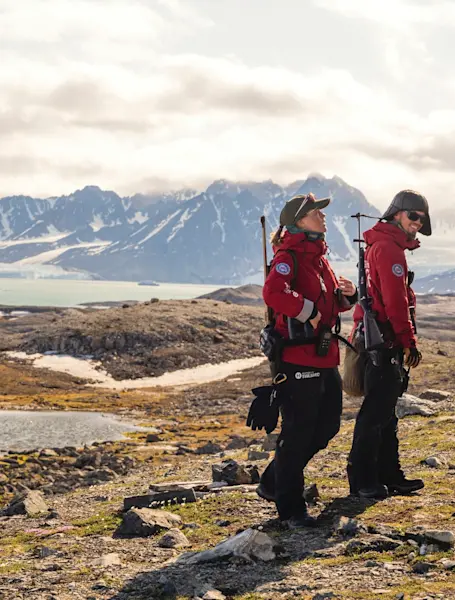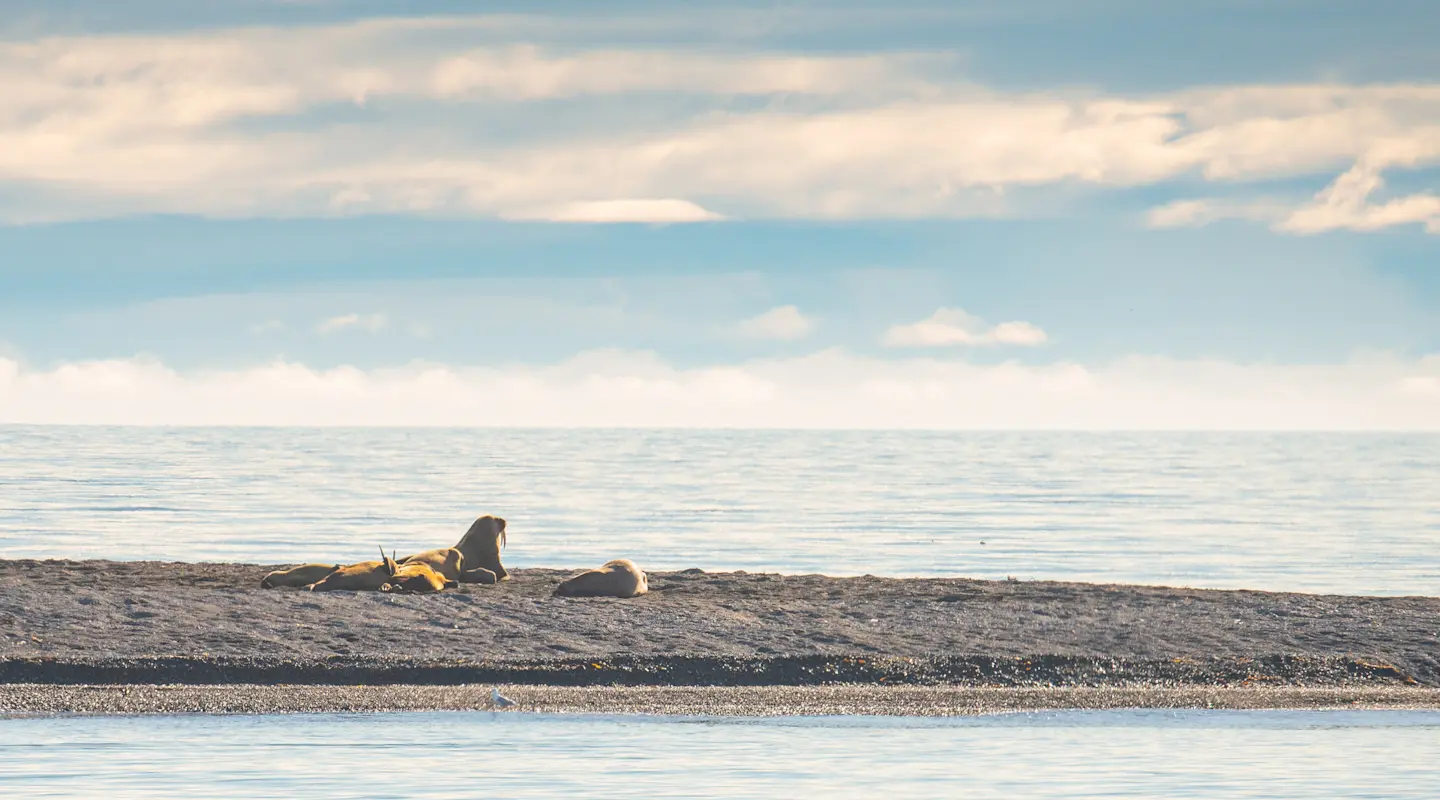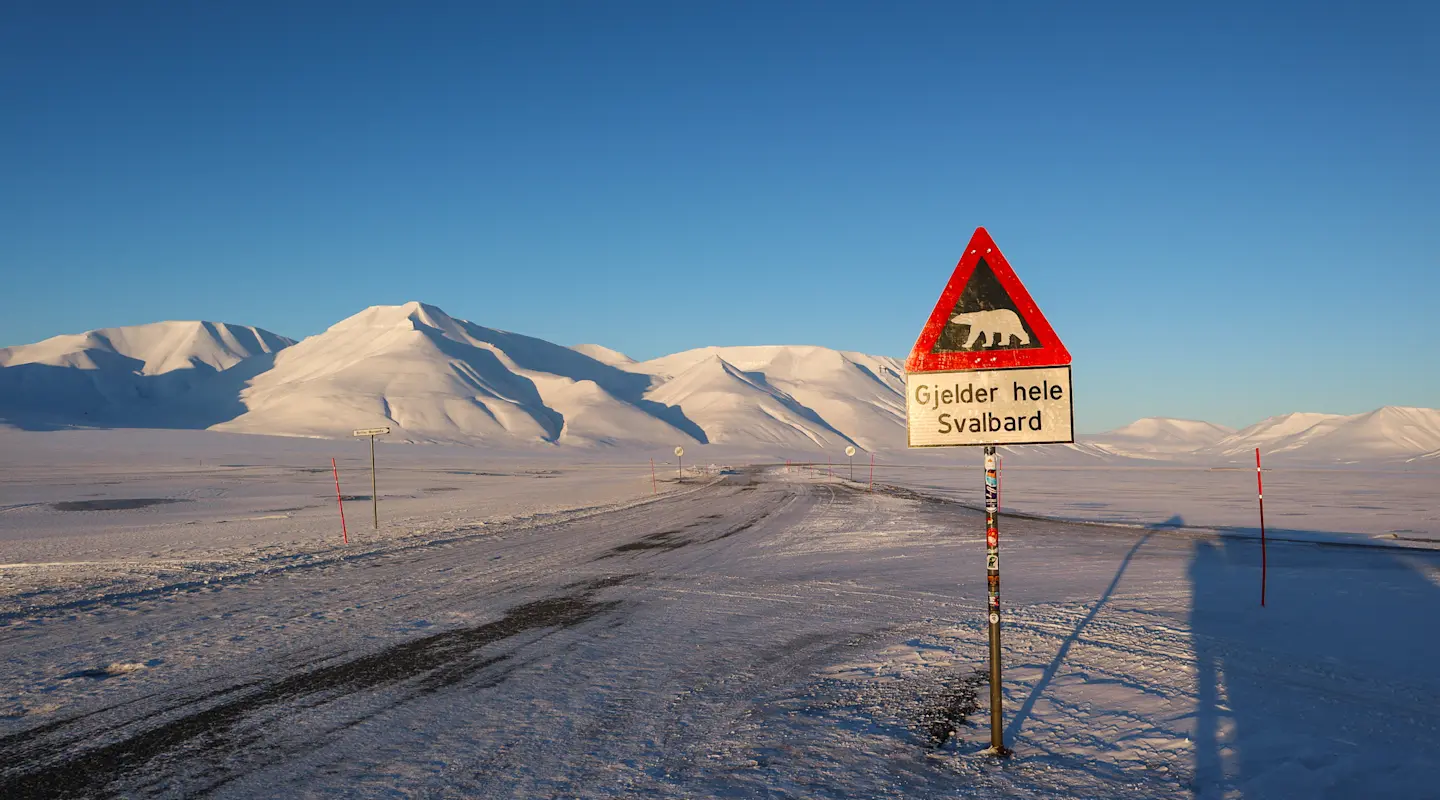
Svalbard Adventure Mini-Cruise | Sunday to Friday
Embark on the ultimate Spitsbergen experience with our Sunday to Friday mini-cruise package, which not only offers an exciting voyage but also includes an extended stay in Longyearbyen after the cruise.
Sail through Svalbard's breathtaking landscapes, encountering glaciers, fjords, and diverse wildlife along the way. Upon your return to Longyearbyen, enjoy an extra night to explore the town’s unique charm, savour local culinary delights, and participate in land-based activities.
This package gives you the perfect balance of Arctic adventure and relaxation, with a post-cruise stay that makes for a more complete and leisurely Arctic escape.
Book before the 1st May and save up to 15% across all 2025 departures. Apply discount code 'DAS2025' at checkout.
*Terms and Conditions Apply

Tentative itinerary
Journey to the top of the world, crossing the 80th parallel to explore the breathtaking wonders of the Arctic.
Step back in, time on the MS Serenissima, a timeless vessel that evokes the spirit of a bygone era of Arctic exploration, offering a classic and authentic experience.
As we sail past dramatic fjords, towering mountain peaks, and vast glaciers, keep your eyes peeled for polar bears, walruses, whales, and an array of Arctic birdlife.
Delve into the history of Arctic exploration in Ny-Ålesund, a former mining town and one of the northernmost settlements in the world.
Please Note
The day-by-day programme offers a glimpse of what you can expect during your voyage, but please remember that this itinerary is just a guide. As with any adventure, the elements are in charge, and weather conditions may lead to changes along the way.
Day 1: On the edge of the wilderness
Location: Longyearbyen
Summary: Arrival in Longyearbyen. Explore the town and enjoy a light dinner at a local restaurant. Overnight stay at either the Radisson Blu Polar Hotel or Funken Lodge, depending on your cabin category

Day 2: Settlements of the far North
Location: Longyearbyen and Isfjorden
Summary: Morning at leisure in Longyearbyen, followed by a guided tour, including visits to the Svalbard Museum and Camp Barentz. Embark on the MS Serenissima and sail through Isfjorden, observing Arctic wildlife and historical sites.

Day 3: Chances of seeing polar bears
Location: Magdalenefjorden, North West Corner, Moffen, and 80° North
Summary: Enter remote Arctic areas with opportunities to see polar bears, explore Magdalenefjorden with its historical whaling sites, and possibly sail above 80° North near Moffen Island, known for its walrus population.
Day 4: Fjords, glaciers, and research
Location: Kongsfjorden and Ny-Ålesund
Summary: Explore the scenic Kongsfjorden, home to glaciers and rich birdlife, followed by a visit to the research settlement of Ny-Ålesund, where you can learn about Arctic exploration history and send a postcard from the northernmost post office. Upon arrival in Ny-Ålesund, the ship will dock at the pier, and passengers can disembark directly from the ship onto the land.
Day 5: Cruising into Isfjorden
Location: Isfjorden and Longyearbyen
Summary: Sail through Isfjorden, observing its wildlife and geology. Return to Longyearbyen, with time to explore the town’s unique northernmost establishments. A light lunch at the hotel is included, along with dinner in the evening.

Day 6: Say goodbye to the Arctic
Location: Longyearbyen
Summary: Departure day, with a transfer from the hotel to the airport, marking the end of the Arctic adventure.
What's included?
Accommodation and Transfers: A one-night stay in Longyearbyen before and after your voyage, with transfers to and from the airport, hotel, and ship.
Food and Drink: Full board as per the programme (breakfast, lunch, and dinner) with complimentary tea and coffee.
Activities: A three-hour sightseeing tour in Longyearbyen, including entrance to the Svalbard Museum and a visit to Camp Barentz, guided landings with small expedition boats during the voyage, onboard lectures and informal gatherings.
Expedition Team: Local expert guides fluent in English, German, Norwegian, and French ensure an informative and enjoyable trip.
Equipment: If you wish, you can borrow walking sticks and boots for the landings. Thermal suits are available on board to keep you extra warm when you're out on deck.
What’s not included
International and domestic flights
Travel Insurance
Luggage handling
Notes
The minimum age requirement to attend the mini-cruise is 2 years old.
All planned activities are subject to change, depending on weather and ice conditions
No gratuities expected
Disconnect and detox sailing - there is no Wi-Fi, internet access or mobile signal during the voyage (except in Longyearbyen and Ny-Ålesund)
When embarking or disembarking the ship in Longyearbyen, at the beginning and end of your voyage, the ship will either be docked alongside the port or anchored in the fjord outside. This means you will either embark/disembark directly from the port, or be tendered to the ship in Zodiac boats. This decision will depend on port capacity
Activities onboard the ship
Your safety is our priority. Our experienced and highly trained expert guides from Svalbard will accompany all excursions, equipped with the knowledge and tools to handle encounters with polar bears. All planned activities are subject to change based on weather and ice conditions to ensure a safe and enjoyable experience for all passengers.

Landings
Depending on weather and ice conditions, our Expedition Team will use Zodiac boats to attempt various landings throughout our sailing.

Onboard Lectures
You can enjoy onboard lectures by the Expedition Team, who will tell you more about Svalbard and the areas we are exploring. They will also lead daily recaps and preparation for the next day.

Wildlife watching
As we sail there will be plenty of opportunities for wildlife spotting, with the chance to spot seals, reindeer, walruses and if you are lucky - the king of the Arctic, the iconic polar bear.
Don't miss out on exciting activities and culinary experiences in Longyearbyen!
Extend your stay and explore unique land-based activities and dining. Our local travel designers can create a personalised package just for you. Reach out to us for an unforgettable adventure.
Contact Us






